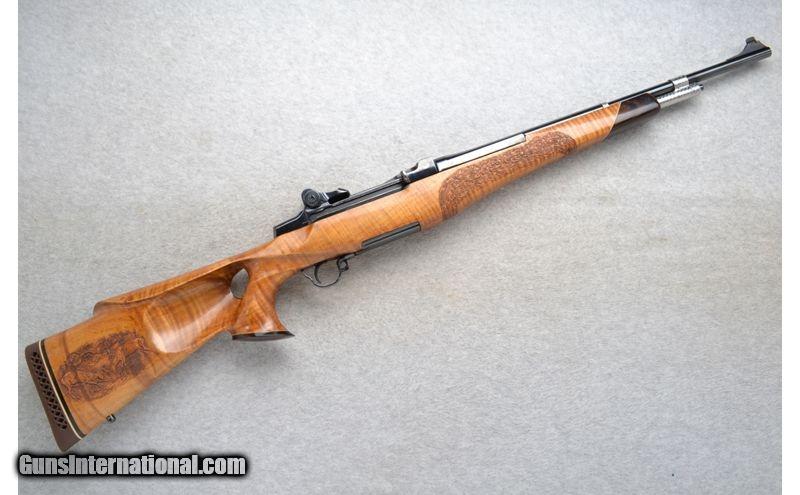


General Patton famously referred to the rifle as “the greatest battle implement ever devised”. While some countries entered the war with limited issued semi-automatic rifles or developed such rifles during the war, America was the only nation to enter with its Army issuing autoloading rifles on a large scale. The rifle would become the first standard-issue semi-automatic infantry rifle in the world. 30, M1 is known affectionately as “the Garand” after its inventor, John Garand. As with all used firearms, a thorough cleaning may be necessary to meet your maintenance requirements. Mechanics: The action functions correctly.
#M1 GARAND STOCK CRACK PLUS#
Overall, this rifle rates in about Very Good Plus condition. The right side of the receiver shows a thin drag line that is consistent with cycling. The receiver shows discoloration from dried oil residue. The bottom metal shows light thinning and a few deep scratches. The receiver legs show some light thinning under the wood. The bottom rear of the receiver shows discoloration from oxidation. The front of the barrel & gas tube have been refinished. The metal shows light scrapes & handling marks. Overall Condition: This rifle retains about 92% of its metal finish. There is fouling & erosion at the muzzle and in the grooves. The front of the barrel & gas tube have been refinished.īore Condition: The muzzle and grooves are light gray. The stock rates in about Very Good overall condition.įinish Originality: Original. The LOP measures 13 ? inches from the front of the trigger to the back of the buttplate. Several have damaged or removed small portions of the surface wood. The stock shows numerous scrapes, scratches, and compression marks. The buttplate shows scratches, and surface erosion. The hardwood stock has a pistol grip, metal nose caps, a stacking loop, two sling loops, and a metal buttplate with hinged door for storage in the butt. The right rear of the butt is marked “5674”. The face of the grip is marked with a “circled P” proof. Stock Configuration & Condition: The left side of the stock, above the trigger, is marked with a “boxed” Springfield Armory inspector’s stamp “SA / E.Mc.F.” and a “crossed cannons” cartouche. The elevation knob is marked from “2-12” in increments of two and “UP arrow DOWN arrow / BATTLE triangle RANGE”. The rear sight is a fully adjustable aperture sight set between two protective wings.The windage knob is marked “LEFT arrow” twice. Sights / Optics: The front sight is a blade set between two protective wings. The stock and sights are described below.
#M1 GARAND STOCK CRACK SERIAL NUMBER#
Op Rod: “D35382 6 SA” – Correct for the Springfield serial number (page 71).īarrel: “P”, and “1-S-A-8-43” – A Springfield part in the correct date range for the serial number (page 63 – 64).īolt: “D28287-12SA / S-B10 diamond” – Correct for the Springfield serial number (page 53). Receiver Leg: “B B A”, “diamond”, and “D 28291 30” – Correct for the Springfield serial number (page 30). Safety: “C46015-9SA” – Correct for the Springfield serial number (page 104).įollower: “11” – Correct for the Springfield serial number (page 83). Hammer: “C46008-5 SA”– Correct for the Springfield serial number (page 98). Trigger Guard: “C-46025-1-SA” -A Springfield part (page 92). Trigger Group: “D28290-12-SA”- Correct for the Springfield serial number (page 90 of Joe Poyer’s M1 GARAND 1936 to 1957, 6th Edition). RIFLE / CAL.30 M1 / SPRINGFIELD / ARMORY / 1902947” Year of Manufacture: September, 1943 (page 185 of Joe Poyer’s M1 GARAND 1936 to 1957, 6th Edition). This M1 Garand uses all Springfield parts.


 0 kommentar(er)
0 kommentar(er)
